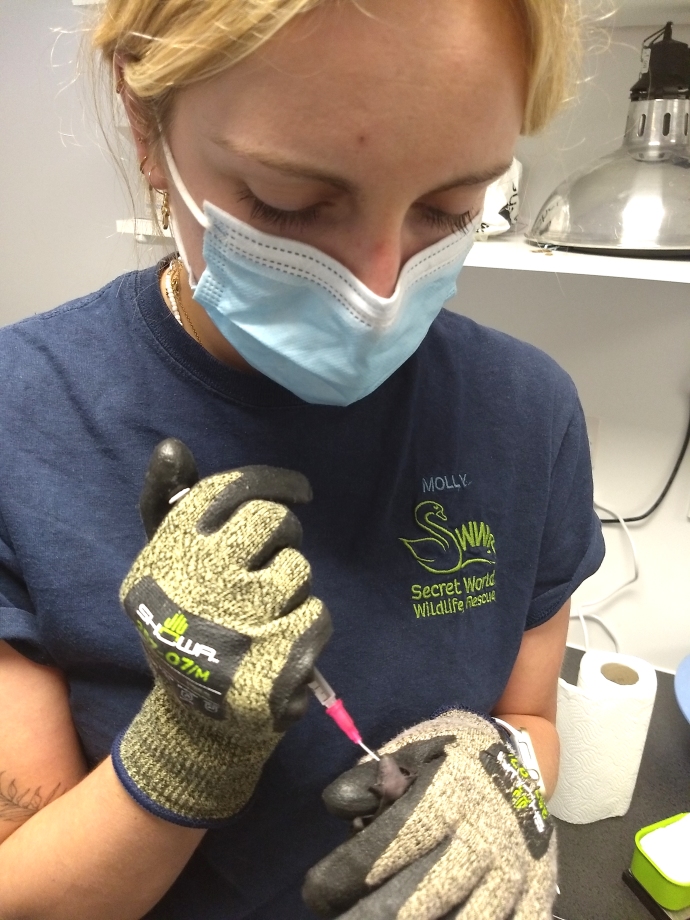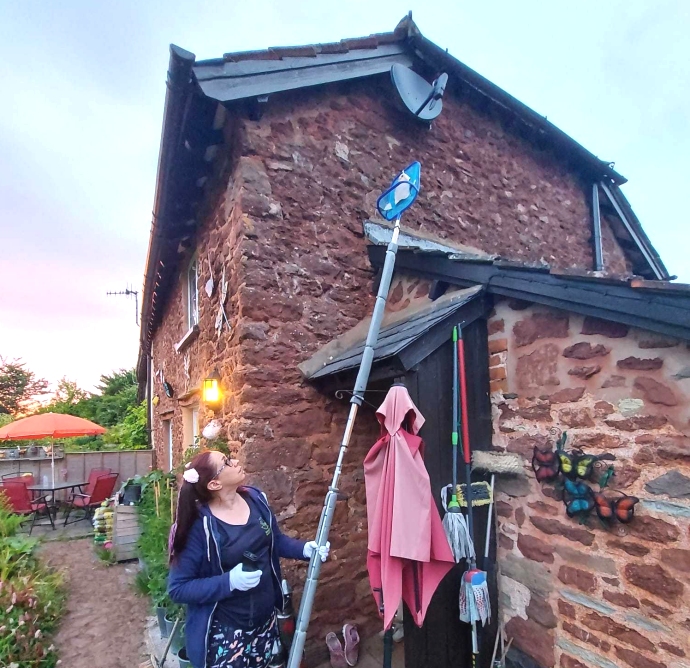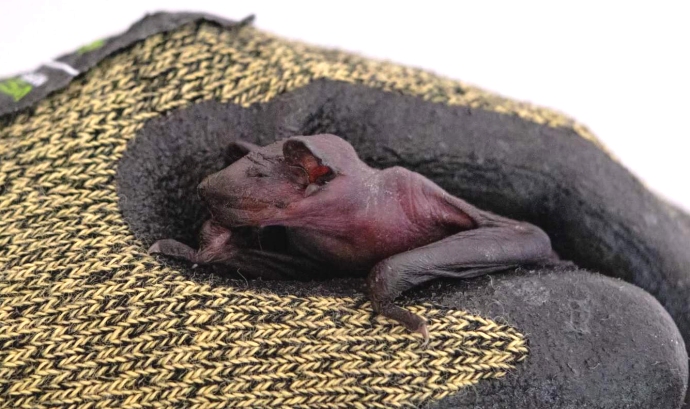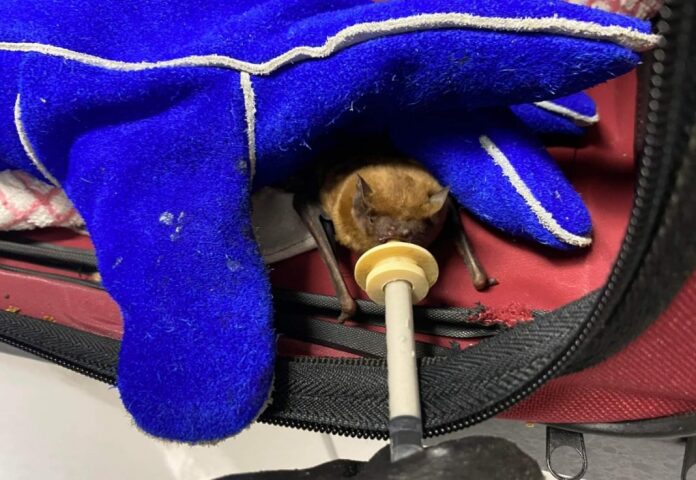Burnham-On-Sea wildlife carers at Secret World Wildlife Rescue are dealing with up to 20 new casualties a day.
This is orphan season for many animals, and these make up a large amount of the admissions that come through the doors.
The charity says it has seen an unusually high number of bats this year and the animal carers are working round-the-clock to give them a second chance at life in the wild.
Katie, an animal carer at Secret World Wildlife Rescue, is a bat-rearing specialist and part of a team of 5 who are looking after the bats.

“We are nearing 50 bats in our care now which may be a new high for us. It’s the widest range of species we have had at the same time,” she told Burnham-On-Sea.com.
“There is a large group of serotine bats with pups whose roost was destroyed, a few adult pipistrelles caught by a cat, a baby Natterer’s bat, and most recently a beautiful young noctule bat, which is the largest native species.”
“They all have to be hand-fed when they come to us as they feed on the wing in the wild. They need live foods, so we’re getting through a lot of waxworms and mealworms at the moment.”
“Bats can only be handled by staff who are vaccinated against rabies, so the bat team is limited to just a few of us. There’s been a lot of long days and late nights by all!”
Katie and Liz, another member of the Animal Care team, have recently been able to carry out a successful natal return of a young pipistrelle bat.
The baby bat was placed on a platform on the end of a long pole, which was held in place by hand close to the roost it came from, as pictured below.

They waited till dusk when the mother came out to have a look, and after an anxious wait as she assessed the situation, she eventually landed on the platform to feed and take her baby back to the roost.
In addition to this, the team are working closely with local bat expert Daniel Hargreaves to radio track one of the serotine bats.
If successful, the bat will help them locate an alternative roost so that they may be able to return the entire roost of serotines that was disturbed.
The charity recently built a temporary outdoor bat flight aviary, where bats are moved once they’re ready to start building up their flight muscles. This also allows them to acclimatise to the outdoors and learn to hunt insects, a vital wild instinct which must be practiced. A larger, permanent flight area is part of the long-term plans for the site.

David Plant, SWWR’s Fundraising Manager, adds: “Now that we’re settled into our amazing new Wildlife Treatment Centre – a building made possible by the incredible support we received from local people and businesses – we are working on long-term plans for the rest of our site.”
“Renovation or new building work is an additional cost that we will have to raise the money for, and we’d love to hear from you if you think you could help us with our development. To boost our income we’re opening more charity shops with year, with an exciting new space coming to Glastonbury in August.”
“The bat flight area will be an important part of this so we can be better prepared for large numbers of bats like we’ve seen this year.”
Around 40% of admissions to our centre are a direct consequence of human activity, and more building and development work means more chances that a bat roost could be disturbed.
Due to the fact that bats often return the same roost year on year, their roosts are protected by law all year round and it is illegal to damage, destroy, or obstruct a roost. If you think a building you’re working on may have bats in it the Bat Conservation Trust are always happy to offer advice.







